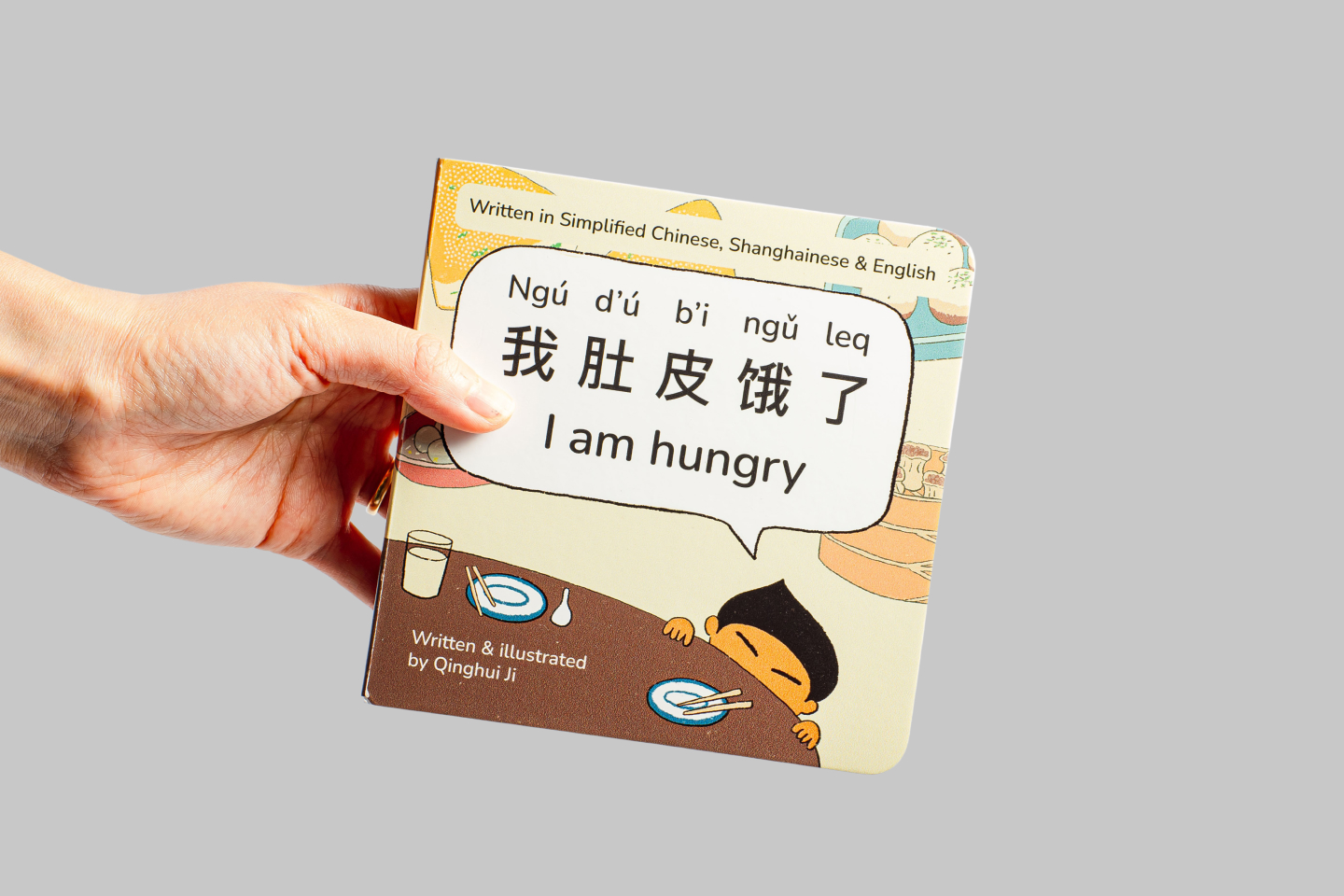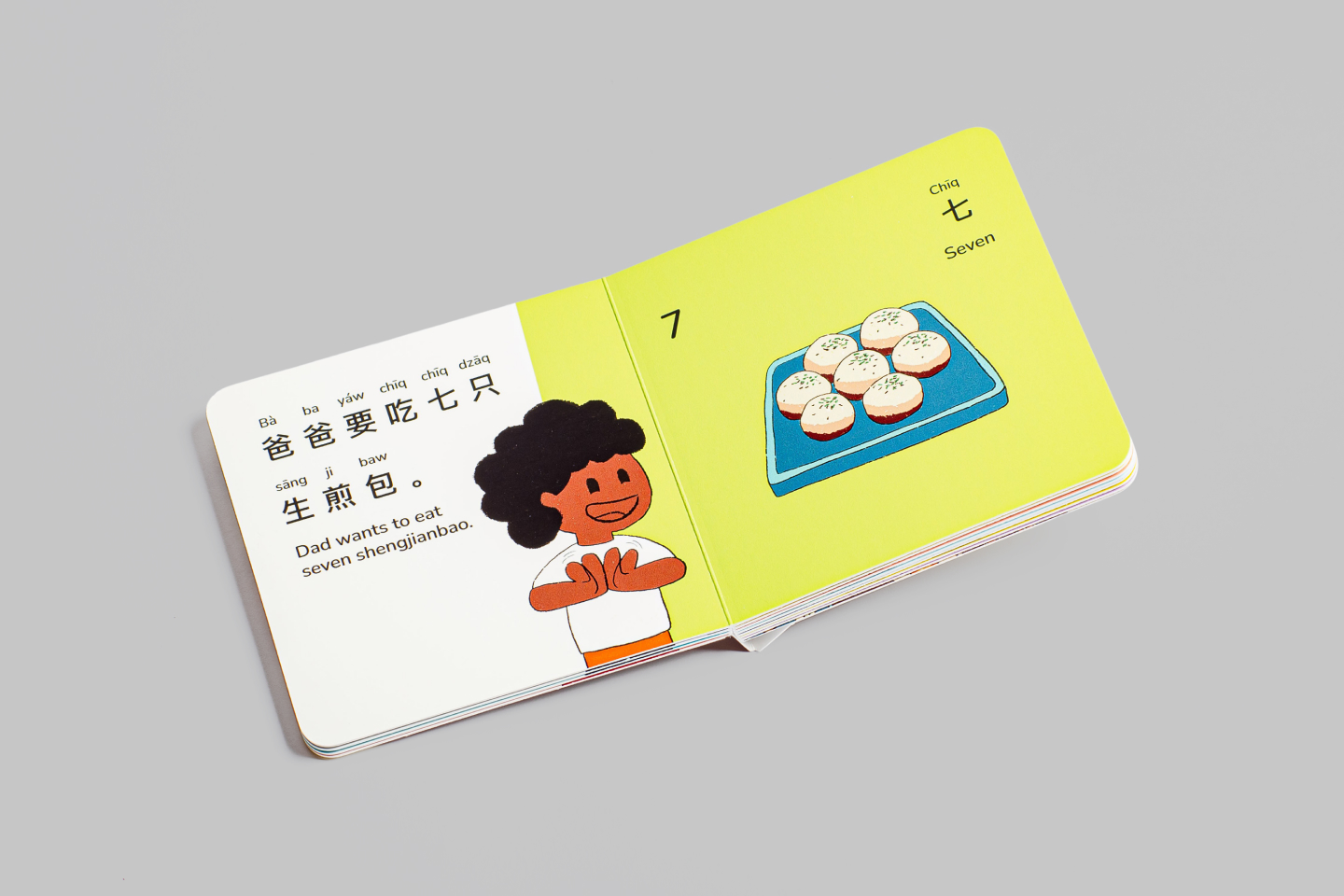
Behind the scenes of making a children's board book
6 min read May 4, 2024
You may know that Mandarin Chinese isn’t the only language spoken in China. What you may not know is that each region in China has its own set of languages spoken by native people in addition to the state mandated Mandarin Chinese.
In the south around Hong Kong, Macau, Guangdong and Guangxi provinces, the Yue Chinese languages (including Cantonese) is the most popular. Around Shanghai and nearby Zhejiang, Jiangsu, Anhui, and Jiangxi provinces, the Wu Chinese language family is dominant.
 Linguistic map of China
(source)
Linguistic map of China
(source)
The story of Chinese cuisine is quite similar. There are popular dishes that can be found in nearly any Chinese restaurant around the world. Yet, each region is home to its own unique food tradition distinct to other parts of the country. In modern times, a set of the best known and influential cuisines within China are formally called the Eight Great Traditions (八大菜系).
 The Eight Great
Traditions
The Eight Great
Traditions
My wife, Q, was born and grew up in Shanghai. She grew up speaking both Mandarin Chinese and the Shanghainese variety of Wu Chinese. At home, she ate Shanghainese cuisine, which is strongly influenced by three of the Eight Great Traditions — Anhui cuisine (徽菜), Jiangsu cuisine (苏菜), Zhejiang cuisine (浙菜).
So, you may understand her feeling of surprise when she saw how little recognition of Shanghainese culture exists outside of China. In an effort to raise awareness of Shanghainese culture, but also to teach our children of their mother’s home language and cuisine, she decided to make a children’s book.
The book is on Kickstarter for another few days if you are interested in backing it.

Behind the scenes
I’ve had a front row seat to her journey of bringing this book to the world. To say that it has been difficult would be an understatement. I decided to sit down with her one recent afternoon to better understand the details of her creative journey.
Background
Can you tell us a bit about your background and what inspired you to create this children’s book?
I was born and raised in Shanghai, and moved to the States when I was 18 years old. After having children of my own, I want to introduce them to my hometown. However, when I searched the children’s book market both in the US and in China, I wasn’t able to find anything written in Shanghainese or highlighting the unique cuisine and culture of Shanghai. Most bilingual books focus on Mandarin or in rare cases Cantonese, so I decided to make my own.
How did your own family and cultural heritage influence the story and themes of the book?
I used my real family members in the book if that’s what you consider influence. When I was researching Shanghainese breakfast foods, I learned that every Shanghainese family has different opinions on what are the most iconic dishes. So in some way, this book does represent what my family considered the most classic Shanghainese breakfast.

The book
Can you give us a high-level overview of the story and the key themes you explore?
It’s about a family ordering Shanghainese breakfast. It’s a bilingual book that teaches children basic numbers and family members in Shanghainese.

What age range is the book intended for, and what are some of the key learning objectives you had in mind?
It is aimed for 0-5 years old, but people of all ages can find it entertaining. I hope people will learn some interesting dishes unique to Shanghai, and simple pronunciation of Shangainese. In case they are eating in a Shanghainese restaurant or visiting the city, they can show off a bit.
Creative inspiration
What artists, illustrators, or children’s books have inspired your own illustration style and approach?
Too many. My childhood favors are Fujiko F. Fujio and Momoko Sakura. Recently I discovered Shinsuke Yoshitake and Kudo Noriko. I guess I like short and cute characters.
How do you balance staying true to your artistic vision while also creating illustrations that will appeal to and engage the target audience?
I don’t think my artistic vision is that different from the target audience. I am still figuring out my artistic vision as I go.
The illustration process
Can you walk us through your typical process of sketching and developing the illustrations for the book? What tools and software do you use?
I spend most of the time plotting the story in my head. Then I will draft it in Procreate on my iPad. I then do detailed work and clean it up in Illustrator or Photoshop.
 An initial sketch
An initial sketch
How do you approach designing the characters and bringing them to life through your illustrations?
They are simple characters based on a weekly comic I make. I tried to capture a couple of essential features for each one, like the hair or the glasses, so readers can recognize them easily.
 An initial sketch of the
characters
An initial sketch of the
characters
What were some of the biggest challenges you faced in translating the story into visual form through the illustrations?
The biggest challenge was to have a recognizable style. I feel I am still in the middle of developing it so there is a lot of uncertainty.
Publishing & promotion
What has the process been like of self-publishing this book? What have been some of the biggest hurdles or surprises?
It is more complicated than I expected, which made me appreciate books even more. For example, regular books can be published through Amazon Kindle Direct Publishing, but they don’t support board books. So I have to do everything myself — getting an ISBN, finding a print shop, raising funding, etc.
How are you marketing and promoting the book to reach your target audience?
I post on my social media accounts, and run some ads. I don’t know how to reach Shanghainese people abroad 😅. So, I’m hoping people will spread it through word of mouth.
Personal & future plans
As a first-time children’s book author, what has this experience been like for you personally?
It is very fulfilling. I am learning new things every day. I also realized that this is not a money making machine. So I’m not sure if I will continue when I run out of passion projects.
Do you have plans to create additional children’s books in the future? What other ideas are you considering?
I am thinking of making a series of children’s books about Shanghainese culture and languages, maybe places to see in the city, famous kid’s rhymes, etc.
Thanks to Q for reading drafts of this.